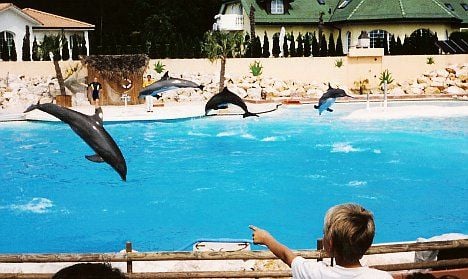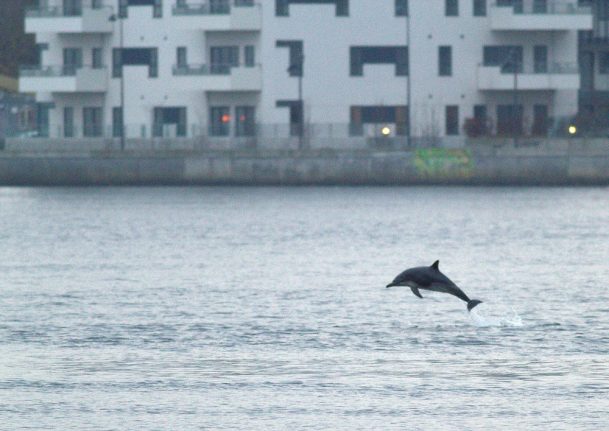On Sunday, a 30-year-old dolphin called Chelmers died with the same symptoms as its 8-year-old partner, Shadow.
A total of eight dolphins have died at the park near Lipperswill in the last three years.
The public prosecutor investigating the death of Shadow has said it is possible the cases are linked. He will also investigate the second dolphin’s death.
Although the autopsy results won’t be ready for another two to three weeks, animal welfare organisations have claimed that Shadow died from stress.
Shadow died just days after a 16-hour techno rave was held 50 metres from the aquarium. Conservationists had warned authorities that the dolphins’ immune system could be damaged by the loud music.
According to a medical examination at the veterinary hospital of the University of Zurich, the animal was not suffering from any infection and his vital organs were in a normal state.
However, police have not not ruled out the possibility that both animals could have been poisoned.
The public prosecutor said the park had received threats last week, though he stressed that these were directed at Connyland’s managers and not the animals. Measures have been taken to prevent other animals from getting hurt.
Animal welfare organisations Oceancare and Swiss Protection for Animals have for years described as “unacceptable” the living conditions of dolphins at Connyland.
In 2010, Oceancare pressed charges against the park for an alleged serious violation of the Animal Protection Act, but the case is still pending.
Conservative Democratic Party national councillor Brigitta Gadient filed a motion in September to stop the import of dolphins to Switzerland. In a recent interview with newspaper Blick, she said it was “insane” that no action had been taken despite so many animals having died at Connyland.
But the head of the Federal Veterinarian Office, Hans Wyss, voiced his opposition to an import ban. In an interview with newspaper NZZ published on Sunday, Wyss also disapproved of the idea of sanctioning Connyland.



 Please whitelist us to continue reading.
Please whitelist us to continue reading.
Member comments